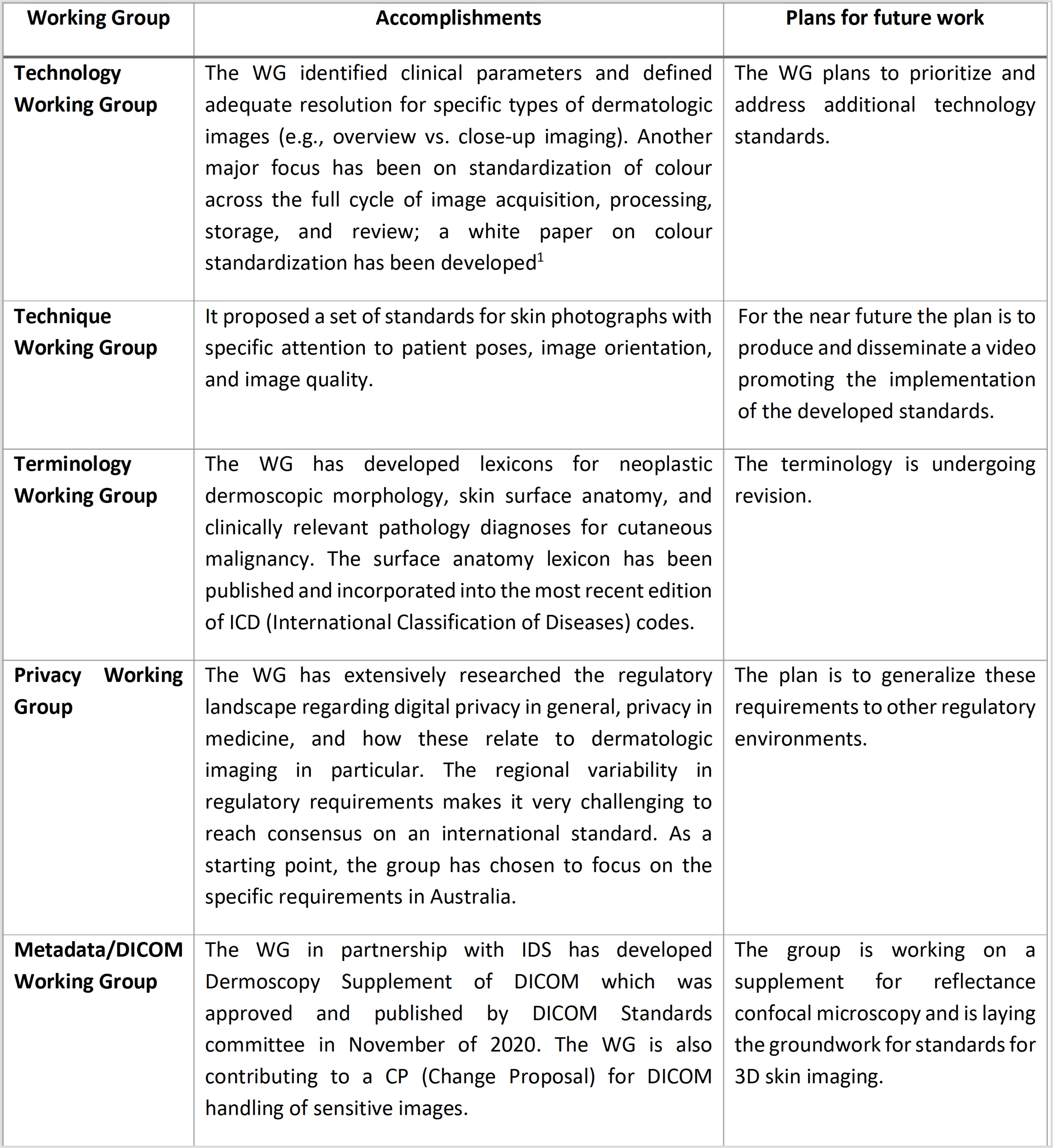In this blog we continue analysing standardization in dermatology, presenting the International Skin Imaging Collaboration (ISIC and the Supplement of the DICOM Standard related to Dermatology.
The International Skin Imaging Collaboration (ISIC)
The following table reports some ISIC accomplishments and plans for future work:

The Supplement of the DICOM Standard related to Dermatology
Digital Imaging and Communications in Medicine (DICOM) is the international standard for medical imaging[2].
Although DICOM is ubiquitous in some medical image-producing specialties (e.g., radiology, cardiology, and radiation therapy), to date, the use of DICOM for dermatological imaging has been limited.
Recently considerable efforts have being invested in developing dermatology-specific extensions to the DICOM standard under the pressure of the increasing use of imaging in dermatology. It is being driven by many factors, including diagnostic imaging (as opposed to documentary imaging) such as teledermatology, sequential dermoscopic imaging, and melanoma screening using total body photography. The ability of DICOM to encode relevant metadata and afford interoperability with the digital health ecosystem such as electronic medical records, picture archiving and communication systems (PACS) and enterprise imaging repositories, has driven the interest in the adoption of DICOM for dermatology.
The DICOM Working Group 19 developed a Supplement of the DICOM standard specifically devoted to dermatology. Dermatology-specific IODs (Information Object Definitions) for dermoscopy have been developed and included in the DICOM standard. Future work items proposal will be for total body photography and reflectance confocal microscopy (3).
In addition to the interoperability benefits, DICOM adoption is also likely to facilitate the use of artificial intelligence (AI) in clinical dermatology.
Another DICOM working group (WG 23) is developing a mechanism to support AI workflows. DICOM can improve AI workflows by encoding derived objects (e.g., secondary images, visual explainability maps, AI algorithm output) and the efficient curation of multi-institutional datasets for machine learning training, testing, and validation. This can be achieved using DICOM mechanisms such as standardized image formats and metadata, metadata-based image retrieval, and de-identification protocols. DICOM can address several important technological and workflow challenges for the implementation of AI. However, many other technological, ethical, regulatory, medicolegal, and workforce barriers will need to be addressed[3].
[1] https://doi.org/10.1007/978-3-030-24544-3_8.
[2] Additional information on DICOM are available in the article “Understanding DICOM” published in the iToBoS web site (www.itobos.eu).
[3] Caffery LJ, Rotemberg V, Weber J, Soyer HP, Malvehy J, Clunie D. The Role of DICOM in Artificial Intelligence for Skin Disease. Front Med (Lausanne). 2021 Feb 10;7:619787. doi: 10.3389/fmed.2020.619787. PMID: 33644087; PMCID: PMC7902872.
